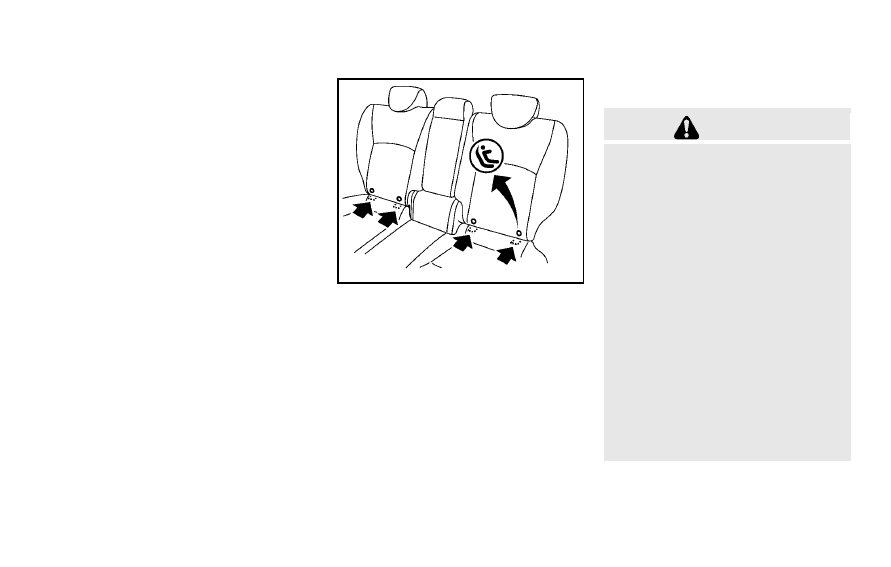Infiniti EX35 (2012 year). Instruction - part 3

Several manufacturers offer child restraints
for infants and small children of various
sizes. When selecting any child restraint,
keep the following points in mind:
. Choose only a restraint with a label
certifying that it complies with Federal
Motor Vehicle Safety Standard 213 or
Canadian Motor Vehicle Safety Stan-
dard 213.
. Check the child restraint in your vehicle
to be sure it is compatible with the
vehicle’s seat and seat belt system.
. If the child restraint is compatible with
your vehicle, place your child in the
child restraint and check the various
adjustments to be sure the child
restraint is compatible with your child.
Choose a child restraint that is de-
signed for your child’s height and
weight. Always follow all recommended
procedures.
All U.S. states and Canadian provinces or
territories require that infants and small
children be restrained in an approved child
restraint at all times while the vehicle is
being operated. Canadian law requires the
top tether strap on front-facing child
restraints to be secured to the designated
anchor point on the vehicle.
SSS0839
LATCH system lower anchor locations
Lower Anchors and Tethers for
CHildren (LATCH) SYSTEM
Your vehicle is equipped with special
anchor points that are used with the LATCH
(Lower Anchors and Tethers for CHildren)
system compatible child restraints. This
system may also be referred to as the
ISOFIX or ISOFIX compatible system. With
this system, you do not have to use a
vehicle seat belt to secure the child
restraint.
The LATCH anchor points are provided to
install child restraints in the rear outboard
seating positions only.
LATCH lower anchor
WARNING
Failure to follow the warnings and instruc-
tions for proper use and installation of child
restraints could result in serious injury or
death of a child or other passengers in a
sudden stop or collision:
.
Attach LATCH system compatible child
restraints only at the locations shown in
the illustration.
.
Do not secure a child restraint in the
center rear seating position using the
LATCH lower anchors. The child restraint
will not be secured properly.
.
Inspect the lower anchors by inserting
your fingers into the lower anchor area.
Feel to make sure there are no obstruc-
tions over the anchors such as seat belt
webbing or seat cushion material. The
child restraint will not be secured
properly if the lower anchors are ob-
structed.
Safety — Seats, seat belts and supplemental restraint system
1-23